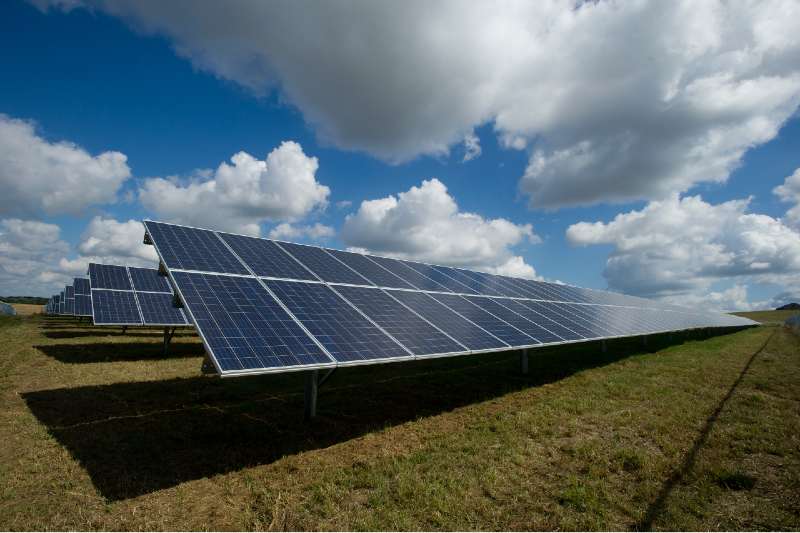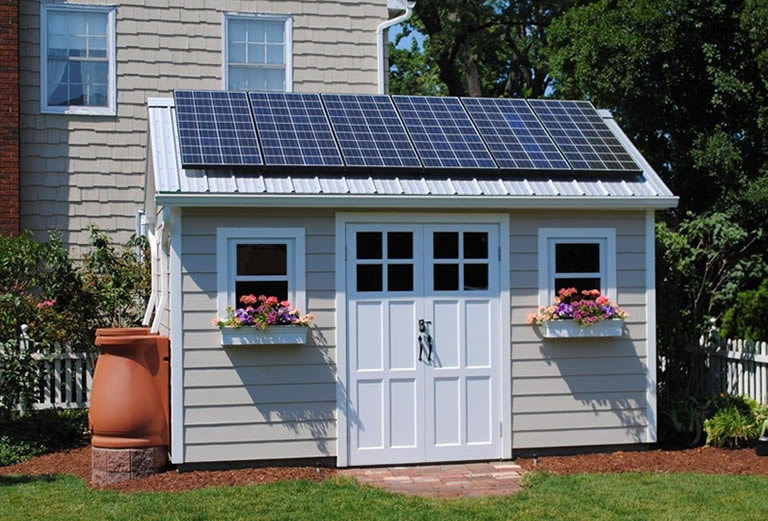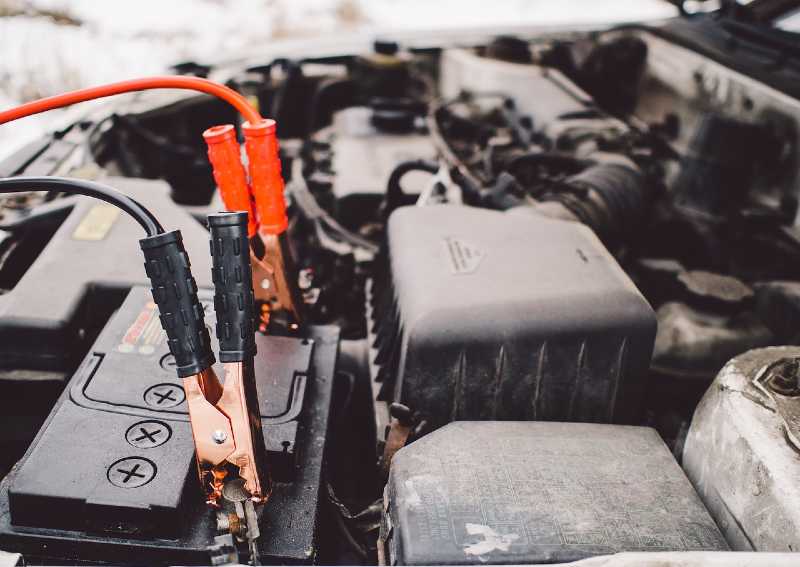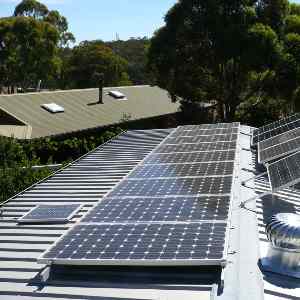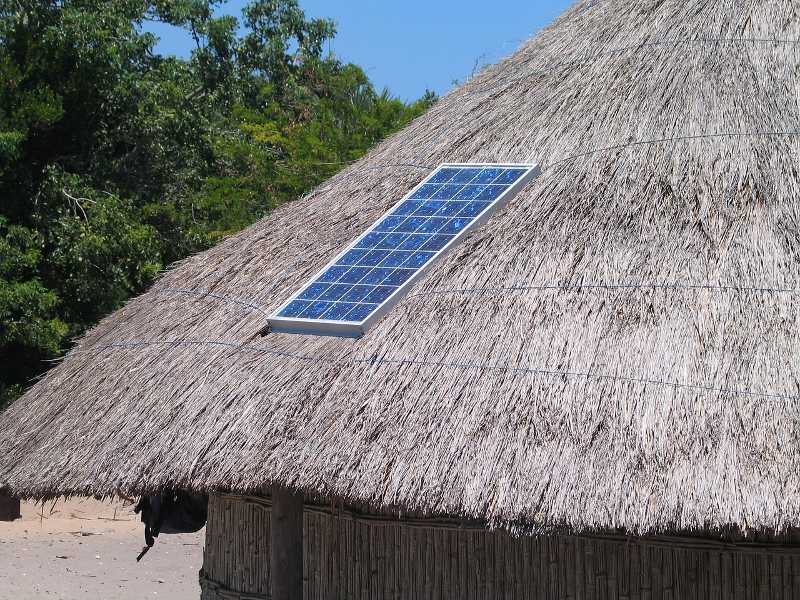Since their inception in the mid-20th century, solar panels have significantly evolved from fragile prototypes to the highly durable energy sources we depend on today.
Today’s panels are designed to withstand harsh environmental conditions, including high winds, hail, and heavy snow, and boast a lifespan that often exceeds 25 years.
In this article, I’ll walk you through the aspects of the durability of solar panels, including their construction, materials, and the testing standards they must meet.
Key Takeaways
- Solar panels are created through a meticulous process that turns materials like silicon into devices that convert sunlight into electricity.
- To protect the PV cells, they are encapsulated in a durable, transparent material to protect against environmental elements.
- The solar panel’s back sheet acts as a shield, offering additional protection against moisture, UV rays, and electrical hazards, ensuring the panel’s longevity.
- A sturdy frame made from materials like aluminum or steel provides the solar panel with essential structural support and stability.
- A layer of tempered glass covers the panel’s front, protecting the cells from the elements and debris while allowing optimal sunlight penetration.
How Solar Panels Are Manufactured?
Solar panels, also known as photovoltaic (PV) modules, are manufactured through a detailed and careful process that transforms simple materials into energy harvesters.
It all starts with photovoltaic cells, which are made from a special type of material, usually silicon.
These cells convert sunlight into electricity, serving as the heart of the solar panel.
To protect these delicate cells, manufacturers encapsulate them in a durable, transparent material.
This encapsulation acts like a protective barrier, protecting the cells from environmental threats like moisture and dust while allowing sunlight to pass through.
Next, there’s the back sheet, a layer added to the back of the solar panel.
Think of it as the panel’s shield, providing additional protection against moisture, UV rays, and electrical hazards.
Then comes the frame which is made from strong materials like aluminum or steel.
This frame acts as the skeleton of the solar panel, giving it structure and stability.
At the front, the solar panel is covered with a layer of tempered glass.
This glass is tough enough to protect the cells from weather elements and debris while being clear enough to let the maximum amount of sunlight through.
To boost the panel’s efficiency, the glass is often treated with an anti-reflective coating.
This coating reduces the amount of light that bounces off the panel, ensuring that more sunlight is absorbed and converted into electricity.
Can Solar Panels Break?
Solar panels can break, despite their robust construction designed to last 25 to 30 years.
They are built to endure many of the challenges posed by nature, such as intense rain, strong winds, and hail.
However, they are not entirely indestructible and can be damaged under extreme conditions.
How Do Rainstorms Affect Solar Panels?
Rainstorms have a bit of a dual effect on solar panels.
On one side, when the sky is overcast with rain clouds, they block out sunlight, which means the panels can’t produce as much electricity as they would on a sunny day.
But it’s not all bad news when it rains.
Rain helps out in a pretty handy way.
Over time, solar panels collect dust, dirt, and other debris that can block some of the sunlight.
When it rains, the water washes this buildup away, giving the panels a good cleaning.
This natural wash can boost their efficiency and help them perform better once the skies clear.
But there’s a cautionary note to keep in mind, especially regarding the solar inverter.
During a storm, if lightning strikes, it could send a surge of electricity that might damage the inverter.
To protect against this, using a surge protector is a smart move.
It acts like a shield, blocking any sudden spikes in electricity from reaching and potentially harming the inverter.
Can Wind Damage Solar Panels?
High-speed winds from hurricanes, thunderstorms, and tornadoes can pose a threat to structures, including solar panels.
However, the resilience of solar panels against such forces is quite remarkable.
In the U.S., solar panels undergo testing to ensure they can withstand winds up to 140 mph, which offers reassurance in extreme weather.
When solar panels incur damage, it’s often not the panels themselves but the racking system that holds them in place or the impact from flying debris that causes issues.
A study by the NREL, looking at data from 2009 to 2013, showed that only about 0.1% of 50,000 solar systems were impacted by damage each year due to such conditions.
Regarding hurricanes, most solar panels on the market can endure up to Category 3 hurricanes, where wind speeds reach up to 129 mph.
Some panels are even robust enough to withstand Category 4 hurricanes, with wind speeds ranging from 130 to 156 mph.
There have been numerous instances where homes equipped with solar panels have weathered hurricanes and continued to produce power afterward.
This shows the importance of checking the durability of solar panels before buying them, especially in areas prone to such natural events.
In Florida, for instance, where hurricanes are more common, the regulations are even stricter, requiring solar panels to withstand up to 160 mph winds, aligning with Category 4 hurricane standards.
Solar panels can also withstand the forces associated with tornadoes, which are more common in central U.S. states but can occur nationwide.
Panels are generally capable of surviving F0 and F1 tornadoes, which have wind speeds between 40 to 112 mph and can even hold up against some F2 tornadoes, with winds reaching 113 to 157 mph.
Can Hail Damage My Solar Panels?
Hail can damage solar panels, but thankfully, they’re built to endure quite a bit of impact.
Most quality solar panels have a layer of tempered glass that’s designed to withstand significant force, protecting the photovoltaic cells beneath.
When shopping for solar panels, you’ll find that they are tested to hold up against hail of certain sizes—usually between one and two inches in diameter.
It’s a good idea to delve into the specifics of different solar panel models and their resilience ratings against hail impacts.
To gauge a panel’s durability against hail, you can look for two important ratings: UL 61730 and IEC 61730.
These standards indicate that the panels are tested and can withstand hailstones measuring one to three inches in diameter, traveling at speeds of up to 88.3 mph.
To safeguard your investment, also ensure that your solar panels are covered under your homeowner’s insurance or through a warranty provided by the installer.
According to the NREL, the likelihood of solar panels being damaged by hail is less than five percent, but it’s always best to be prepared.
In areas known as Hail Alley, which includes states like Nebraska, Colorado, and Wyoming, hail is a common concern.
These regions might not face hurricanes, but they do experience significant hailstorms.
Do Solar Panels Work During Hurricanes or Thunderstorms?
During hurricanes or thunderstorms, solar panels can still function, but they don’t produce as much electricity as they do on sunny days.
This is because they need sunlight to generate power, and during these weather events, clouds and reduced light make it harder for them to work efficiently.
When there’s a power outage, which often happens during severe weather, the inverters will usually turn off automatically.
This is a safety measure to protect people who might be fixing the power lines.
To make sure you still have electricity during these times, it’s a great idea to have a storage battery.
This battery stores extra energy your solar panels generate on sunny days.
Then, when it’s cloudy or at night, or if there’s no power from the grid, you can use the energy stored in the battery to power things in your home.
Can Solar Panels Withstand Flood-Prone Areas?
Solar panels can withstand flood-prone areas with the right setup in place.
The key is to protect the system’s electrical components from water.
These parts can be waterproofed or enclosed in special casings that prevent water ingress.
It’s also crucial to plan the routing of electrical conduits to avoid areas that are likely to be submerged during a flood.
In some cases, installers might position the solar panels higher up or incorporate additional protective measures like flood barriers to protect the system.
I recommend consulting with a professional installer who has experience with setting up solar systems in areas prone to flooding.
They can offer customized advice on optimal panel placement and effective waterproofing techniques.
How to Inspect My Solar Panels After a Weather Event?
After a weather event, you need to inspect your solar panels to check for any potential damage.
Here’s a step-by-step guide to help you through the process:
- Ensure Personal Safety: Before beginning the inspection, ensure no hazardous conditions like downed power lines are present. If you encounter any dangers, immediately inform the relevant authorities and follow their recommended safety protocols.
- Visual Inspection: Inspect your solar panels for visible damage such as cracks, loose connections, or shattered glass, and check for debris impact or frame deformation.
- System Shutdown: If you notice any damage during your visual check, immediately shut down the solar array to prevent electrical hazards while further inspecting or repairing.
- Grounding and Wiring: Next, take a look at the grounding system and all the wiring connections. You’re looking for anything loose, corroded, or damaged in any way.
- Mounting and Racking: Examine the mounting system and racking for any signs of movement, damage, or misalignment, and verify that all bolts, brackets, and components are secure, keeping the panels firmly attached.
- Electrical Testing: Even if visually everything appears fine, conduct electrical testing by measuring the panels’ voltage and current output to ensure performance is as expected, as significant deviations could indicate hidden damage.
FAQs
Can Solar Panels Be Easily Damaged?
Solar panels can be damaged by extreme weather or physical impacts, though they are generally durable and designed to resist environmental conditions.
How Many Years Does a Solar Panel Last?
Solar panels typically last 25 to 30 years, maintaining a substantial level of efficiency throughout their lifespan.
Do Solar Panels Break Down Over Time?
Over time, solar panels do break down, experiencing a slow decrease in efficiency, but they remain operational for many years.
How Durable Is Solar?
Solar technology is highly durable, built to endure harsh weather conditions and long-term use, making it a dependable renewable energy source.
Conclusion
As promised, we’ve covered the essential factors that contribute to the remarkable durability of solar panels.
But here’s a thing: while solar panels are indeed built to last, their longevity also depends on proper installation and maintenance.
Just like a well-kept car can outlast one that’s neglected, solar panels need regular check-ups to ensure they’re performing at their best.
I recommend scheduling annual inspections to clear any debris, check for any damage, and ensure the system is operating efficiently.

